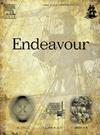电子维萨里:学科内容和背景的实验性重组,在解剖学视觉历史的复兴
IF 0.5
4区 哲学
Q3 HISTORY & PHILOSOPHY OF SCIENCE
引用次数: 0
摘要
莱斯大学的一个跨学科团队和德克萨斯医学中心图书馆合作开发了一本解剖学地图集,以安德烈亚斯·维萨里乌斯1543年的《Fabrica》为中心。作为一件装置作品,成品弥合了物理和数字图像文本和学科方法之间的鸿沟;但是在这个长达一年的项目的发展过程中,它表明一个孤立领域的问题可以成为另一个领域的解决方案,如果放在一个协作的环境中来看的话。在本文中,我们列出了2016年暂时重组部分解剖学视觉历史的材料、背景、内容、合作者和技术,并建议如何利用这一点来启发未来的项目,以可负担得起的方式将档案图像文本作为博物馆互动,以及更广泛的跨学科合作。莱斯大学的一个多学科团队与德克萨斯医学中心图书馆的稀有图书馆员合作,制作了一个结合了数字/物理的解剖学地图集,其主要的触敏界面是基于安德烈亚斯·维萨里乌斯1543年首次出版的《人体结构》(De Humani Corporis Fabrica)中的第五个木刻肌肉板。这件作品安装在图书馆的大厅里,让游客可以与珍本室大量收藏的前数字解剖学地图集中的难以接近的物品进行物理互动。这个项目的开始是出于对图书馆珍本书室里的医学人文资源的迷恋,这些资源只有在监督下才供研究人员使用。因为医学人文学科试图拓宽医学的概念,超越狭隘的生物医学,我们认为,在现代医学图书馆的入口室展示横跨图书馆馆藏的解剖学历史,可以有效地将学生从日常环境中带出来。但是当我们使用原始的原始材料,次要的学术研究,以及我们用来构建这个互动地图集的媒体的技术支持时,我们发现我们的目标从让游客看到他们所在领域的历史,发展到希望把那段漫长的历史带回到生活中,并允许它说一些可能是新的东西,至少在这个装置的特定地点的背景下。我们的主要方法论发现是,STS和工程设计在关键制作/设计的媒介中是有效的合作伙伴。这个项目在公共传播、学术研究和教育学领域的影响,作为一件装置作品、同行评审的出版物,以及对未来项目的启发。通过构建这个混合界面的过程,团队借鉴了过去的印刷和医疗技术以及当前的电子和数字媒体技术。此外,该团队还在界面设计、交互性和数字历史等领域提出了新的问题和解决方案。至关重要的是,该团队为跨人文/工程领域的学科建模了新的方法,以有效地相互联系,使用关键的制造/设计项目和工作流程来提出和解决单个贡献学科无法看到的问题,更不用说自己解决问题了。本文章由计算机程序翻译,如有差异,请以英文原文为准。
The electronic vesalius: an experimental reorganization of disciplinary contents and contexts, in the reanimation of visual histories of anatomy
An interdisciplinary team at Rice University and the Texas Medical Center Library collaborated in the development of an atlas-of-anatomy-atlases centered around Andreas Vesalius’ 1543 Fabrica. As an installation piece, the finished product bridged the divides between physical and digital image-texts and disciplinary methods; but in the process of its development as a year-long project, it suggested that problems in one siloed field can be solutions in another, when viewed in a collaborative context. In this paper we lay out the materials, the contexts, the content, the collaborators, and the technologies that provisionally reorganized a portion of the visual history of anatomy in 2016, and suggest how this might be used to inspire future projects in the affordable reanimation of archival image-texts as museum interactives, as well as interdisciplinary collaborations more broadly.
A multidisciplinary team at Rice University collaborated with the Texas Medical Center Library’s rare book librarians to produce a combined digital/physical atlas of anatomy atlases, whose primary touch-sensitive interface was based on the fifth woodcut plate of muscles from Andreas Vesalius’ De Humani Corporis Fabrica, first published in 1543. This piece, installed in the library’s lobby, allowed visitors to physically interact with difficult-to-access objects from the rare book room’s extensive collection of pre-digital anatomy atlases. The project began out of a fascination with the medical humanities resources held in the library’s rare books room, which are only available to researchers under supervision. Because the medical humanities seek to broaden the conception of medicine beyond the narrowly biomedical, we thought that showing the history of anatomy across the library’s holdings in the entry room of a modern medical library could productively bring students out of their daily context. But as we worked with the primary source materials, the secondary scholarship, and the technological affordances of the media we used to build this interactive atlas, we found our goals evolving from bringing visitors to see the history of their field, toward a desire to bring that long history back to life and to allow it to say something that might be new, at least in the site-specific context of the installation. Our key methodological finding was that STS and engineering design are felicitously productive partners in the medium of critical making/design. This project’s impact registered in the domains of public communication, scholarly research, and pedagogy, as an installation piece, peer-reviewed publications, and inspiration for future projects. Through the process of constructing this hybrid interface, the team borrowed from past print and medical techniques as well as current electronics and digital media technologies. Moreover, the team generated new problems and solutions in the areas of interface design, interactivity, and digital history. Critically, the team modeled new ways for disciplines across the humanities/engineering divide to productively relate to each other, using critical making/design projects and workflows to pose and solve problems that the individual contributing disciplines would not be able to see let alone address on their own.
求助全文
通过发布文献求助,成功后即可免费获取论文全文。
去求助
来源期刊

Endeavour
综合性期刊-科学史与科学哲学
CiteScore
1.10
自引率
16.70%
发文量
19
审稿时长
49 days
期刊介绍:
Endeavour, established in 1942, has, over its long and proud history, developed into one of the leading journals in the history and philosophy of science. Endeavour publishes high-quality articles on a wide array of scientific topics from ancient to modern, across all disciplines. It serves as a critical forum for the interdisciplinary exploration and evaluation of natural knowledge and its development throughout history. Each issue contains lavish color and black-and-white illustrations. This makes Endeavour an ideal destination for history and philosophy of science articles with a strong visual component.
Endeavour presents the history and philosophy of science in a clear and accessible manner, ensuring the journal is a valuable tool for historians, philosophers, practicing scientists, and general readers. To enable it to have the broadest coverage possible, Endeavour features four types of articles:
-Research articles are concise, fully referenced, and beautifully illustrated with high quality reproductions of the most important source material.
-In Vivo articles will illustrate the rich and numerous connections between historical and philosophical scholarship and matters of current public interest, and provide rich, readable explanations of important current events from historical and philosophical perspectives.
-Book Reviews and Commentaries provide a picture of the rapidly growing history of science discipline. Written by both established and emerging scholars, our reviews provide a vibrant overview of the latest publications and media in the history and philosophy of science.
-Lost and Found Pieces are playful and creative short essays which focus on objects, theories, tools, and methods that have been significant to science but underappreciated by collective memory.
 求助内容:
求助内容: 应助结果提醒方式:
应助结果提醒方式:


